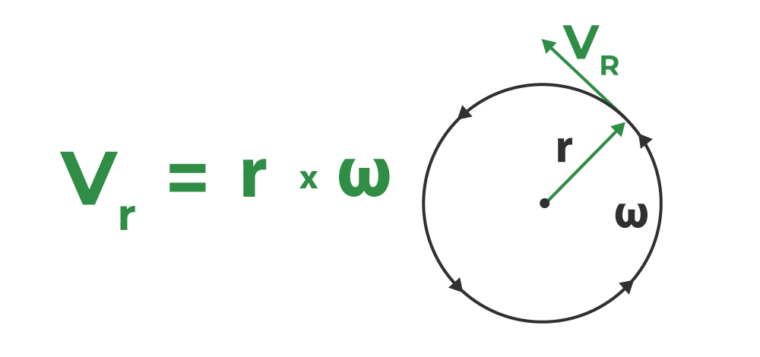
For those who are unfamiliar with Angular velocity, it is one of the fundamental concepts in both physics as well as engineering. Angular velocity describes the rate at which an object would rotate and spins around its fixed axis (For example, how fast the rotation of wheels in cars). Understanding angular velocity is important in many other fields such as mechanical engineering, and robotics.
So, in this article we are going to delve more into the intricacies, description as well as the function of Angular velocity formula in tech applications, calculating the angular velocity, discussing the formula for it, the unit of measurement, as well as the practical applications in many fields such as mechanical engineering, robotics, and astronomy.
If you are looking for the formula for Angular velocity then you have come to the right place. Please visit the link provided below to understand more about the formula of Angular velocity, as well as how you can understand it better in the field of math and physics.
Understanding Angular Velocity
Angular velocity represents the change in angular side displacement over time. Angular displacement itself refers to which angle through which the object rotates within the fixed axis. Usually, this is measured in radians. To better describe Angular velocity, it is denoted with the omega symbol or “ω” and then add with velocity, so it is measured with radians per second or (rad/s)
This is the formula for calculating Angular velocity:
ω = ∆θ / ∆t
Description:
ω = Angular velocity (in rad/s)
∆θ = Change in the angular displacement (radians)
∆t = Change in the time (time, in seconds)
The formula for Angular velocity is pretty straightforward, as the Angular velocity is equal in that the change in angular displacement, is divided into the change in time. It is radians divided by the time in seconds or rad per second.
However, it is important to note that to calculate the constant angular velocity, the changes in the angular displacement or radians are supposedly proportional to the change in time, or the time in seconds. To calculate the angular velocity we have provided instructions as well as steps on how to calculate it within simple steps.
The Unit Of Measurement For The Angular Velocity
Angular velocity could be described into various units, based on their application. The easiest and most common measurement is to use radian per second or (rad/s). In many certain applications, there are also measurements of degrees per second, as well as revolutions per minute (RPM), we can see RPM in many different applications such as mechanical engineering and car for example.
The Practical Applications Of Angular Velocity In Tech Applications
After you understand how to calculate the Angular velocity, it is best that you also understand the applications of the Angular velocity in many fields, such as tech applications. There are many significant applications in many different fields, such as mechanical engineering, robotics, astronomy, as well as sports biomechanics.
So, here are a few of the practical applications for Angular velocity, as well as a simple explanation of how Angular velocity is important within that field.
Read also : Which Kind of Mouse Is Better for Gaming?
1. Robotics
In robotics, it is essential to calculate the Angular velocity to control the movements of the robotic joints, as well as arms. It is also important to calculate the precise angular velocity so the joints won’t be broken, and it enables better, more precise coordinated motions within the robotics.
In addition, angular velocity would also be used to calculate the moving motor within the robots, and better design the coordinated motion of it.
2. Mechanical Engineering
Angular velocity plays an important role in designing the rotating motor, angle, and wheels, as such it plays quite a crucial role in mechanical engineering. Within the field of mechanical engineering, there are a lot of rotating machinery, such as gears, engines as well as turbines therefore all of them are closely related to angular velocity.
It is important to calculate the velocity of each motion, and if not calculated properly, the machine won’t work, and there might be crucial failures for it.
3. Astronomy
In astronomy, it is calculated with a lot of factors, and variables, especially with celestial mechanics. Angular velocity helps to describe, and then calculate the rotation within the orbital motion of many celestial bodies such as planets, moons, stars, galaxies, and many other celestial bodies within the galaxy.
It also helps astronomers to predict the orbits, rotation, and then the desired orbit of certain celestial bodies, and could also help to predict many things, for example, the orbit of a meteor.
4. Sports Biomechanics
Angular velocity can be sued to assess and then optimize the performance of the athlete. Many people might seem unfamiliar with using physics for sports, but in reality, many sports consistently used Angular velocity within their motions for example gymnastics, figure skating, as well as sport diving.
To understand better the formula for Angular velocity as well as many other Math and Physics formulas, visit the provided link here. Not just to know about the formula for Physics, or math, but there are also tips for many things, from the instructions on English grammar, how to learn better, and how to become better students, In addition, the website could also help you in becoming a better more learned person.
